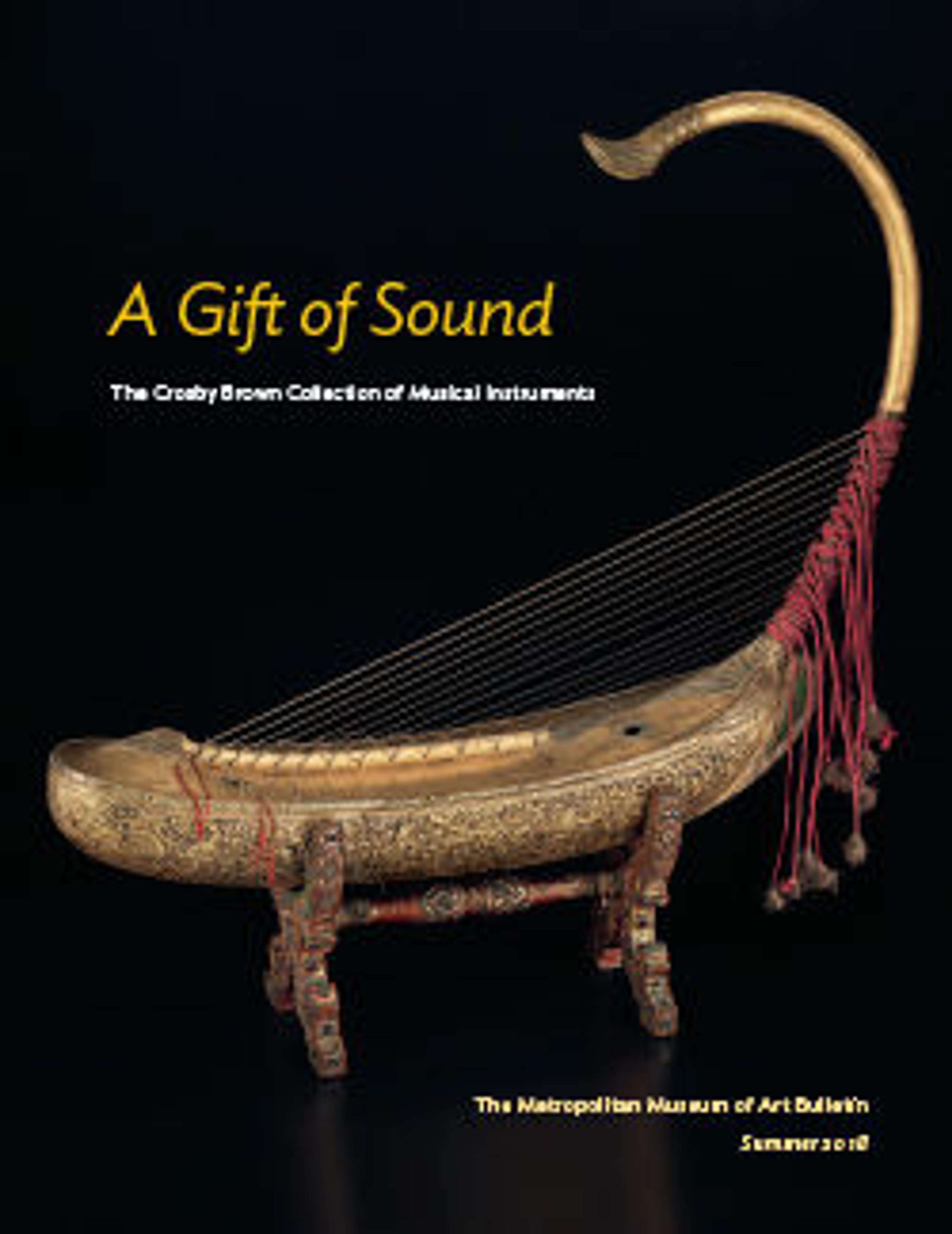Chegah-Skah-Hdah (dance wand)
A product of European trade items, this rattle has three crotal brass bells and fifty-nine rolled-metal conical jingles. Each bell or jingle is attached to the shaft of the rattle by a small strip of Native-tanned leather inserted at its apex and tied, or, in the case of the conical jingles, compressed between the metal walls. The shaft of the rattle has a wooden core covered in stitched Native-tanned leather, allowing the small pieces attached to the bells and jingles to be stitched to the leather covering. Rolled-metal cones like these are often found on the dresses of women dancers in the Great Plains culture region; the dresses are worn for a special type of dancing, known as Jingle Dancing. It is common to see jingles formed from the reused lids of cut chewing tobacco canisters. Rattles like this would be employed during the dance, held in the hand and made to sound along with the movement of the dancer.
Artwork Details
- Title:Chegah-Skah-Hdah (dance wand)
- Date:19th century
- Geography:Plains States, United States
- Culture:Native American (Sioux)
- Medium:Wood, metal, leather
- Dimensions:L. 21 in. (53.3 cm)
- Classification:Idiophone-Shaken-rattle
- Credit Line:The Crosby Brown Collection of Musical Instruments, 1889
- Object Number:89.4.597
- Curatorial Department: Musical Instruments
More Artwork
Research Resources
The Met provides unparalleled resources for research and welcomes an international community of students and scholars. The Met's Open Access API is where creators and researchers can connect to the The Met collection. Open Access data and public domain images are available for unrestricted commercial and noncommercial use without permission or fee.
To request images under copyright and other restrictions, please use this Image Request form.
Feedback
We continue to research and examine historical and cultural context for objects in The Met collection. If you have comments or questions about this object record, please contact us using the form below. The Museum looks forward to receiving your comments.
